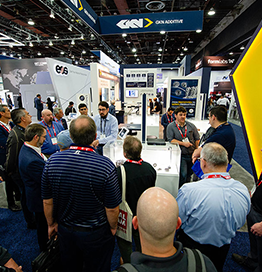A layer of topcoat will give your piece a more polished finish. There are options for a glossy or matte finish the customer’s choice. As always, apply after the paint is dry. Topcoat layers should also be thin. Using เครื่องพิมพ์ 3 มิติ is essential here.
To paint 3D pieces, the most important thing is to have, above all, patience. Leave the piece very smooth using the sandpaper or chemicals and clean well before applying the primer. Primer, paint and topcoat layers should always be thin. Wait for the piece to dry between layers and that’s it.
Preserving filaments for 3D printing is critical to ensuring good parts. Often a printed end product will fail and that doesn’t mean the printer settings are wrong or you’re not a good maker.
Failures in printed objects can occur, for example, due to moisture present in the filaments, invisible to the naked eye. Problems like tangled filament are also common and detrimental to your impression. With this in mind, the Materialize blog has prepared a number of tips on how to preserve filaments for 3D printing. Check out.
Preventing the filament from tangling

To preserve filaments for 3D printing, your tips should always be in one of three places: on the printer while you work; in your hand; or stuck in the coil. This prevents the filament from tangling or knotting. To avoid unpleasant surprises, remember to keep your filaments out of reach of children and pets. 3D printing filaments can be fun for you, not for them.
Beware of the filament holder in the printer
Ideally, the filament coil should roll with some friction during the printing process. This prevents the cord from becoming too loose and tangling. To do this, you can place a cloth between the holder and the bobbin, allowing it to roll freely, but not tighter. It is also recommended to use a guide to direct the filament and prevent it from tangling.
The filament tangled
If the filament becomes tangled, do not unwind the thread by pulling on the end. Support the bobbin on a table, hold the end of the filament, and rotate the spool until it reaches the curled part. Remove the filament from the side of the bobbin and wind it up again, keeping the thread tight. Here’s how to perform the maneuver.
Moisture and heat care
In general, all types of filaments are sensitive to moisture and intense heat, some more than others. Nylon filaments, polyethylene glycol polyethylene terephthalate (PETG) and acrylonitrile butadiene styrene (ABS) are often the most sensitive to moisture. A damp filament, when used, emits popping noises during printing, resulting in a more fragile product. In addition, the end product may have flaws such as a surface full of bubbles and irregularities. Using damp filaments may also clog the printer nozzle. Therefore, if the goal is to preserve filaments for 3D printing, you should be mindful of how to store your products.
Dry storage
To preserve filaments for 3D printing, be sure to store them away from moisture and heat. No method is right or wrong. It is up to each maker to decide what works best for himself.
